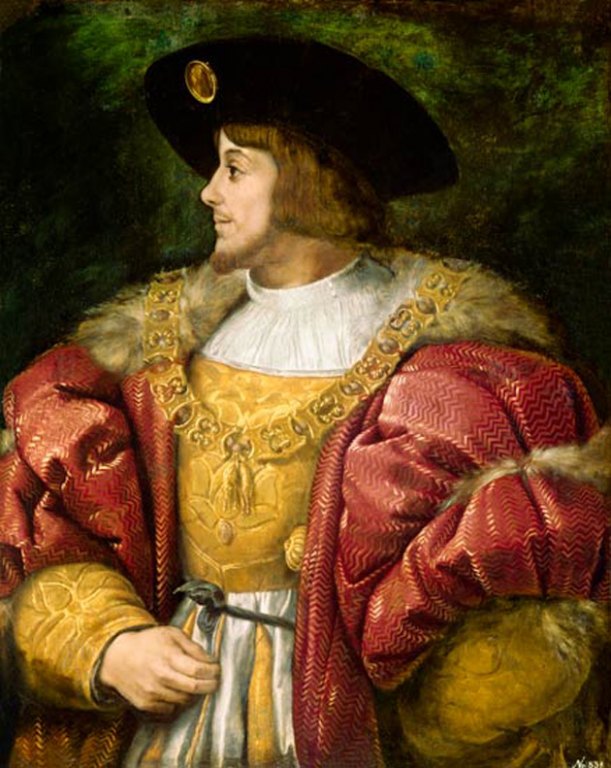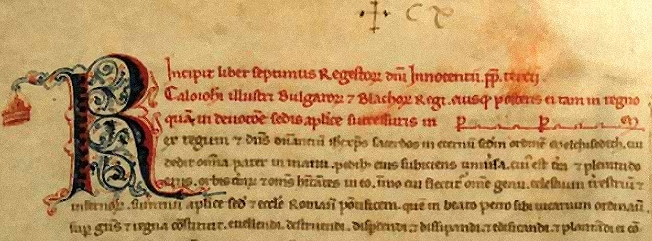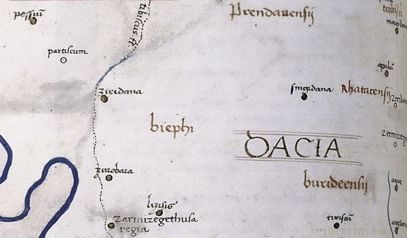|
Banate Of Severin
The Banate of Severin or Banate of Szörény (; ; ; , ; , ) was a Hungarian political, military and administrative unit with a special role in the initially anti- Bulgarian, latterly anti- Ottoman defensive system of the medieval Kingdom of Hungary. It was founded by Prince Béla in 1228. Territory The Banate of Severin was a march (or a border province) of the medieval Kingdom of Hungary between the Lower Danube and the Olt River (in present-day Oltenia in Romania). A charter of grant, issued on 2 June 1247 to the Knights Hospitallers, mentioned the Olt as its eastern border. The Knights received the "Land of Severin" ''(Terra de Zeurino)'', along with the nearby mountains, from Béla IV of Hungary. The king had described the same region as a "deserted and depopulated" land in a letter to Pope Gregory IX on 7 June 1238. Modern scholars assume that either the Hungarian conquest of the territory or confrontations between Bulgaria and Hungary had forced the local population t ... [...More Info...] [...Related Items...] OR: [Wikipedia] [Google] [Baidu] |
Ban (title)
Ban () was the title of local rulers or officeholders, similar to viceroy, used in several states in Central Europe, Central and Southeast Europe, Southeastern Europe between the 7th and 20th centuries. The most common examples have been found in medieval Croatia and medieval regions ruled and influenced by the Kingdom of Hungary. They often ruled as the king's governmental representatives, supreme military commanders and judges, and in 18th century Croatia, even as chief government officials. In the Banate of Bosnia they were always ''de facto'' supreme rulers. Historical sources The first known mention of the title ''ban'' is in the 10th century by Constantine VII, Constantine VII Porphyrogenitus, in the work ''De Administrando Imperio'', in the 30th and 31st chapter "Story of the province of Dalmatia" and "Of the Croats and of the country they now dwell in", dedicated to the Croats and the Croatian organisation of their medieval state. In the 30th chapter, describing in Medieval ... [...More Info...] [...Related Items...] OR: [Wikipedia] [Google] [Baidu] |
Voivode
Voivode ( ), also spelled voivod, voievod or voevod and also known as vaivode ( ), voivoda, vojvoda, vaivada or wojewoda, is a title denoting a military leader or warlord in Central, Southeastern and Eastern Europe in use since the Early Middle Ages. It primarily referred to the medieval rulers of the Romanian-inhabited states and of governors and military commanders of Poles, Hungarian, Lithuanian, Balkan, Russian people and other Slavic-speaking populations. In the Polish-Lithuanian Commonwealth, ''voivode'' was interchangeably used with '' palatine''. In the Tsardom of Russia, a voivode was a military governor. Among the Danube principalities, ''voivode'' was considered a princely title. Etymology The term ''voivode'' comes from two roots. , means "war, fight," while , means "leading", thus in Old Slavic together meaning "war leader" or "warlord". The Latin translation is for the principal commander of a military force, serving as a deputy for the monarch. In ... [...More Info...] [...Related Items...] OR: [Wikipedia] [Google] [Baidu] |
Battle Of Mohács
The Battle of Mohács (; , ) took place on 29 August 1526 near Mohács, in the Kingdom of Hungary. It was fought between the forces of Hungary, led by King Louis II of Hungary, Louis II, and the invading Ottoman Empire, commanded by Suleiman the Magnificent and his grand vizier, Pargalı Ibrahim Pasha. The Ottomans achieved a decisive victory through superior planning, firepower, and a well-executed encirclement that overwhelmed the Hungarian forces. The Hungarian army, encouraged by the nobility to engage prematurely, launched a frontal assault that collapsed under coordinated Ottoman counterattacks. King Louis and much of the Hungarian aristocracy were killed, resulting in the destruction of the royal army and the end of the Jagiellonian dynasty in Hungary and Bohemia. The aftermath saw the partition of Hungary between the Ottoman Empire, the Habsburg monarchy, and the Eastern Hungarian Kingdom. The battle marked the beginning of sustained Ottoman–Habsburg wars and the ... [...More Info...] [...Related Items...] OR: [Wikipedia] [Google] [Baidu] |
Siret (river)
The Siret or Sireth (, , , ) is a river that rises from the Carpathians in the Northern Bukovina region of Ukraine, and flows southward into Romania before it joins the Danube. It is long,Planul de management al spațiului hidrografic Siret Administrația Națională Apele Române of which a section is in Romania, and its basin area is , of which in Romania. Its average discharge is . In ancient times, it was named ''Hierasus ... [...More Info...] [...Related Items...] OR: [Wikipedia] [Google] [Baidu] |
Southern Carpathians
The Southern Carpathians (also known as the Transylvanian Alps; ; ) are a group of mountain ranges located in southern Romania. They cover the part of the Carpathian Mountains located between the Prahova River in the east and the Timiș and Cerna Rivers in the west. To the south they are bounded by the Balkan Mountains in eastern Serbia. Heights The Southern Carpathians are the second highest group of mountains in the Carpathian Mountain range (after Tatra), reaching heights of over 2,500 meters. Although considerably smaller than the Alps, they are classified as having an alpine landscape. Their high mountain character, combined with great accessibility, makes them popular with tourists and scientists. The highest peaks are: * Moldoveanu Peak, 2,544 metres – Făgăraș Mountains * Negoiu, 2,535 metres – Făgăraș Mountains * Parângu Mare, 2,519 metres – Parâng Mountains * Omu Peak 2,514 metres – Bucegi Mountains * Peleaga, 2,509 metres – Retezat Mou ... [...More Info...] [...Related Items...] OR: [Wikipedia] [Google] [Baidu] |
Cerna (Danube)
The Cerna () is a river in Romania, a left tributary of the river Danube. The Cerna has its source on the south-east side of the Godeanu Mountains and flows into the Danube near the town Orșova. e-calauza.ro The upper reach of the river is sometimes called Cernișoara. With a length of and its basin of , it carves an erosive tectonic valley with numerous gorges, quite deep sometimes. There is a man-made lake on it (Tierna), just before it crosses the spa, to perpetuate the old toponimic od Dierna. The upper course of the Cerna is part of the [...More Info...] [...Related Items...] OR: [Wikipedia] [Google] [Baidu] |
Kaloyan Of Bulgaria
Kaloyan or Kalojan, also known as Ivan I, Ioannitsa or Johannitsa (; 1170 – October 1207), the Roman Slayer, was emperor or tsar of Second Bulgarian Empire, Bulgaria from 1196 to 1207. He was the younger brother of Peter II of Bulgaria, Theodor and Ivan Asen I of Bulgaria, Asen, who led the Uprising of Asen and Peter, anti-Byzantine uprising of the Bulgarians and Vlachs in 1185. The uprising ended with the restoration of Second Bulgarian Empire, Bulgaria as an independent state. He spent a few years as a hostage in Constantinople in the late 1180s. Theodor, crowned Emperor Peter II, made him his co-ruler after Asen was murdered in 1196. A year later, Peter was also murdered, and Kaloyan became the sole ruler of Bulgaria. After the successful Siege of Varna (1201), siege of Varna in 1201 against the Byzantine Empire, the defenders and governors of the city were tied and thrown into the moat of the fortress walls and covered with dirt by the Bulgarians. After they were buried a ... [...More Info...] [...Related Items...] OR: [Wikipedia] [Google] [Baidu] |
Timiș River
The Timiș or Tamiš (, , , ) is a river that flows through the Banat region of Romania and Serbia and joins the Danube near Pančevo, in northern Serbia. Due to its position in the region, it has been labeled as the "spine of the Banat". Name In antiquity, the river was known as ''Tibiscus'' (in Latin) and ''Tibisis'' (Θίβισις in ancient Greek), and as ''Timisis'' in De Administrando Imperio; in addition, Edward Gibbon referred to it as the ''Teyss''. ''The Romans, who traversed the plains of Hungary, suppose that they passed several navigable rivers, either in canoes or portable boats; but there is reason to suspect that the winding stream of the Teyss, or Tibiscus, might present itself in different places under different names.'' Geography The drainage area covers , of which in Romania. With the Danube, the Timis belongs to the Black Sea drainage basin. The river flows through Romania for , and through Serbia. Its average discharge at the mouth is . The sour ... [...More Info...] [...Related Items...] OR: [Wikipedia] [Google] [Baidu] |
Romanian District
A Romanian district () was an autonomous administrative unit of the Vlachs (or Romanians) in the medieval Kingdom of Hungary. Origins According to scholars who say that the Romanians (or Vlachs) descended from the inhabitants of the Roman province of "Dacia Traiana", the Romanians' territorial organization can be traced back to Roman patterns. Their cohabitation with the Slavs, who settled in the region during the Early Middle Ages, also influenced the Romanians' local administration, as it is demonstrated by the title ''Knez (Vlach leader), knez'' of the Romanians' leaders. However, no firm territorial structures developed before the Kingdom of Hungary incorporated Crișana, Banat, Transylvania and other regions inhabited by the Romanians. The territorial units of the Romanians were mentioned as ''terrae'' ("lands"), ''kneziatus'' ("a territory under a knez's rule"), ''provinciae'', ''sedes'' ("Seat (territorial-administrative unit), seats") in medieval royal charters, but mo ... [...More Info...] [...Related Items...] OR: [Wikipedia] [Google] [Baidu] |
Orșova
Orșova (; ; ; ) is a port city on the Danube river in southwestern Romania's Mehedinți County. It is one of four localities in the Banat historical region situated just above the Iron Gates where the Cerna River meets the Danube. History * The locality was the site of a Roman port in Dacia Malvensis, and the site of the Roman city and fort of Dierna * In 1925, a confusion by the scholar Nándor Fettich misplaced the important Magyar burial site discovered at Cheglevici into the Orșova region. Later, the location of that discovery, testifying to the presence of the Magyars since the early 10th century, was clarified for the archeological community. * King Ladislaus I of Hungary decisively defeated the Cumans near Orșova in 1091. * It was a major border fortification in the Middle Ages. * The city was captured by Suleiman the Magnificent in 1522. * Orșova became part of the Habsburg monarchy in 1687 at the start of an Ottoman-Habsburg War, but Ottoman forces recaptur ... [...More Info...] [...Related Items...] OR: [Wikipedia] [Google] [Baidu] |
Mehadia
Mehadia (; ; ) is a small market town and Commune in Romania, commune in Caraș-Severin County, Banat, Romania. It lies on the European route E70, in the Cerna River (Danube), Cerna River valley. The town is located on the site of the ancient Ancient Rome, Roman colony Ad Mediam and was noted for its Hercules baths. It had a population of 2,492 in 1900, and of 4,118 in 2011. The commune is prone to major recurring flooding. The 1838 floods destroyed some 2,000 houses in the valley and the 1841 floods in Mehadia were also devastating. It experienced major flooding more recently in May 2005. The commune is composed of four villages: Globurău (''Golbor''), Mehadia, Plugova (''Ekés''), and Valea Bolvașnița (''Bolvásvölgy''). Etymology The Romanian historian, Alexandru Dimitrie Xenopol, stated that the name of the town had been derived from the ancient Roman name ''Ad Mediam''. Linguist Cicerone Poghirc proposed that the Romans had adopted a hypotethical (non-attested) native ' ... [...More Info...] [...Related Items...] OR: [Wikipedia] [Google] [Baidu] |
Drobeta-Turnu Severin
Drobeta-Turnu Severin (), colloquially Severin, is a city in Mehedinți County, Oltenia, Romania, on the northern bank of the Danube, close to the Iron Gates. It is one of six Romanian county seats List of cities and towns on the river Danube, lying on the river Danube. "Drobeta" is the name of the ancient Dacian and Roman towns at the site, and the modern town of Turnu Severin received the additional name of Drobeta during Nicolae Ceaușescu's national-communist dictatorship as part of his myth-making efforts. Etymology Drobeta was originally a Dacian town.Drobeta–Turnu Severin at britannica.com, accessed 2021-10-14. The Drobeta (castra), Roman fort built by Emperor Trajan at the site preserved the Dacian name. (see "History" section). According to Hamp and Hyllested, Drobeta reflects a Roman misinterpre ... [...More Info...] [...Related Items...] OR: [Wikipedia] [Google] [Baidu] |








